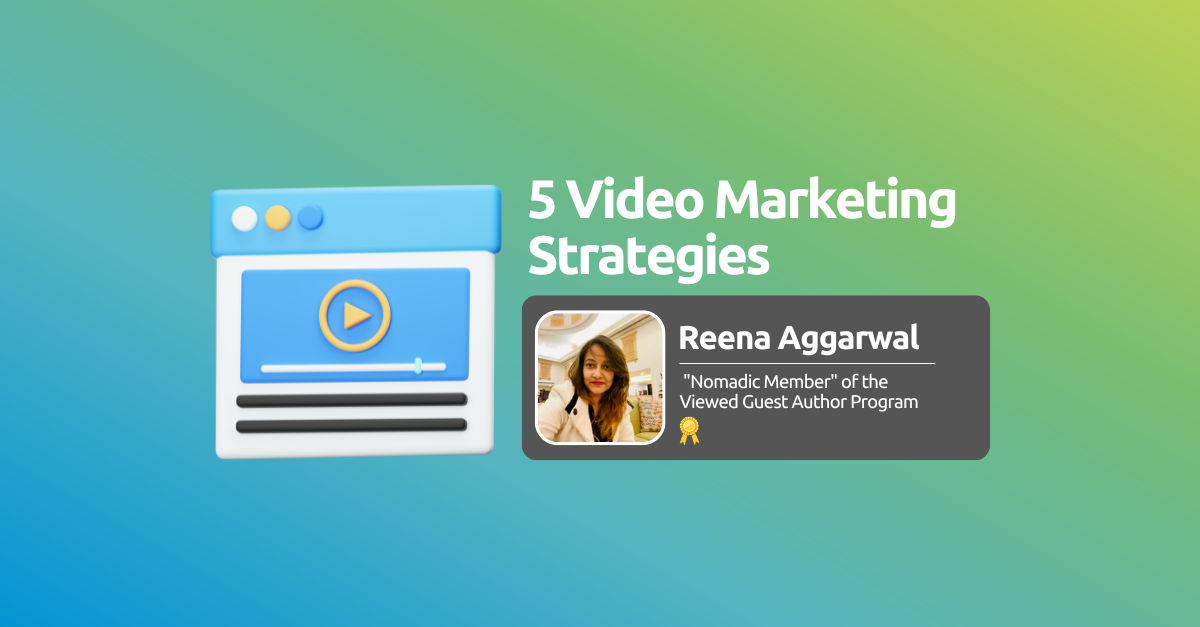In the world of marketing, video content is king. According to studies, there are 3.5 billion video viewers in the world. Global social media phenomenon TikTok has generated over 4 billion ad spending and is showing no signs of slowing down. Indeed, if you haven’t jumped on the video marketing content yet, you’re definitely losing out.
However, creating engaging and compelling videos that your audience will love isn’t as easy as a snap of a finger. It takes careful planning, tons of meticulous details, and a lot of strategic thought behind it.
Want to make your own viral video? Here's a comprehensive guide on how to plan your marketing videos effectively:
6 Tips for an Effective Video Marketing Strategy
1. Identify your target audience
The first and most crucial step in creating a successful video is to know and understand your audience. After all, they are the ones who will be watching the video. If the video doesn’t appeal to them or they don’t find it relatable or useful, then there’s no point.
The two key things to know are the demographics and psychographics of your audience. Demographics refer to the measurable and statistical information of your audience. This is their age, gender, location, religion, marital status, occupation, and income. Psychographics, on the other hand, refers to their psychological traits and characteristics. These are their goals, hobbies, interests, lifestyle choices, values, and pain points.
Gaining these insights can help you tailor your video content accordingly. You can then create videos that appeal to their specific interests or show content that can answer their concerns or questions.
Knowing your audience’s online behavior is also another important factor to consider. Which social media app do they use the most? What time do they usually visit them? What websites do they go to? Do they follow any influencers or content creators? What kind of videos do they typically watch? Do they prefer short-form or long-form videos? Do they prefer educational videos or funnier ones? And so on.
Knowing this information can help you not only in creating your content but also in identifying the best way to distribute it. For example, you may find that posting vlogs on YouTube may be more effective. While for some, their audience might prefer watching explainer videos on their company website.
Don't wait for your audience to find you! Share your video via email and reach them directly.
Discover how to embed videos in email and make them play automatically when the recipient opens the email. Like magic!
2. Set your goals
Establishing a specific and measurable goal can help you in creating great videos that resonate with your customers. It can also help guide you in the creative direction of your content.
You can set your goals to meet a customer’s needs at whatever stage they are in the marketing funnel. The stages are:
- Awareness
- Consideration
- Conversion
- Retention
Awareness is the first stage. It means letting your audience know about your brand, for them to know you exist in the first place. Videos that can help them learn more about you and build familiarity with you are needed for this stage.
Consideration is the second stage. This is where you drive interest toward your brand and products by addressing your audience’s pain points. You can do this by creating an explainer video that talks about the benefits of your product or doing a live demo of how your product works.
Third is conversion. This is the buying stage, or where your audience decides that they want to purchase your product. A testimonial video showing your happy customers or perhaps a video about a huge 75% sale works for this stage.
Last is retention. Getting people to buy from you is good. But turning them into loyal customers who will continue to patronize your business is even better. For this stage, videos that engage your customers are needed to encourage them to stick with you.
By knowing which stage to target, you’ll be able to set clear goals. This can be increasing brand awareness, driving more traffic to your website, or boosting sales for a particular product.
3. Create a storyboard
Want to make your video production process easier? Use a storyboard.
A storyboard is a series of sketches that show an individual shot for a video. This includes the camera angle, camera direction, lighting, dialogue or script, or the music or sound effects.
While they are commonly used for films, they are also used for marketing videos and commercials. Storyboards can contain simple stick figure drawings or a fully detailed illustration. However they look, the end goal is the same – to provide a way to visualize your video concept from start to finish.
Storyboards can greatly help in planning your videos. After all, they serve as your guide or outline. You can see what kind of props you’ll need to prepare, where you’ll need to shoot, what kind of lighting is needed, identify any gaps or inconsistencies in the storyline, and properly plan the schedule of your shoots.
This helps in creating a more efficient and streamlined video production process. You’ll also save time, money, and resources, as you won’t have mistakes that you’ll need to reshoot. This also ensures that all your recorded video material is high-quality and can be used for your final video.
4. Create a production schedule
Speaking of your video production, you’ll need to have a clear production schedule. You can’t just shoot your content whenever you want. You’ll need to follow a timeline so that everyone is on the same page and can be more efficient with their time.
Video production is usually divided into three parts: pre-production, production, and post-production.
Pre-production is essentially the creative planning part. This is where you’ll brainstorm video ideas, come up with the narrative of your content, create the storyboard, write the script, figure out the location for your filming, think of the actors or people you may want to use in the video, figure out the dates for your filming, and so on. Basically, this time is spent on creating a proper timeline for your video.
Production is when you’ll shoot the video. This is where you’ll go to a studio to shoot, or perhaps go to a location. This also includes gathering background footage or b-rolls, or gathering user-generated content if you are planning on including those. You’ll also be recording voice overs at this stage.
Post-production is when the editing happens. This is where you’ll cut, trim, or extend the footage. This is also where visual editing comes in – color grading, light adjustment, adding special effects, transitions, and so on. Adding music, sound effects, and voiceovers is also done at this stage.
Make sure to leave ample time between each stage to ensure that you can dedicate enough time to polish each part. This also means that you’ll have spare time for unforeseen circumstances – bad weather, cancellations, broken equipment, technical issues, etc.
A production schedule is not just for big companies or for those fancy commercials you see on TV. A simple marketing video still needs to follow a proper schedule and process to ensure that the end result is polished and high-quality.
5. Have a content calendar
Another way to have an effective marketing plan is to have a content calendar.
A content calendar shows your planned and upcoming content for the month. This includes details like what the content is plus when and where it will be posted.
This can help you plan and organize your content for the month. This also enables you to see if there are any important events that you’ll need to have content for. A calendar can also give you an overview of the amount of content you’ll need to do to have enough time to prepare for it.
This is even more crucial if your brand tends to have tons of video content, as they take more time to produce compared to other content types. You’ll need to manage your time wisely, and a content calendar helps with that.
6. Go for quality, not quantity
Videos take a lot of time, effort, and resources. Don’t create videos just for the sake of creating one. Make sure that you have a clear goal and reason for it.
The saying “quality over quantity” applies to this as well. It’s better to have a high-quality video that your audience will find engaging rather than having multiple videos that they won’t find interesting at all. Aside from being cost-efficient, polished videos can also help build your brand’s credibility.
How do you get high-quality videos, though? First is the equipment. Invest in a good camera, microphone, and lighting. Editing will also play a huge part. Pay attention to details like framing, composition, transition, special effects, audio quality, color grading, and so on. Use a great editing software or hire editors for a more professional look.
Another is to add your branding. Ever notice how videos from top brands like Coca-Cola, Netflix, or Nike all have that specific look or vibe to them? That’s the power of their branding. Create videos that use your brand’s visual identity such as logo design, color scheme, typography, art style, and so on. Write scripts or storylines that follow your brand voice. And lastly, apply these consistently throughout your videos to build familiarity with your audience and have them associate that specific look with your brand.
7. Conclusion
From social media apps to websites and email marketing campaigns, the power of video is unparalleled. However, the key to an effective video marketing strategy is careful planning. By following the tips above, you’ll be able to craft high-quality videos that resonate with your audience and drive meaningful results.



.png)

